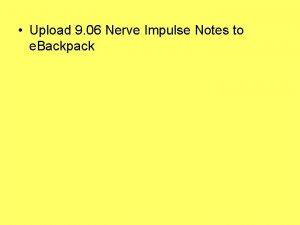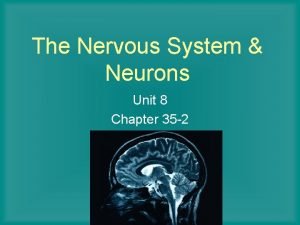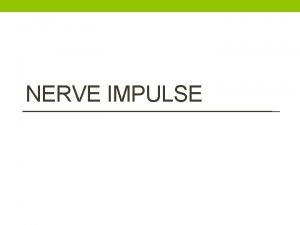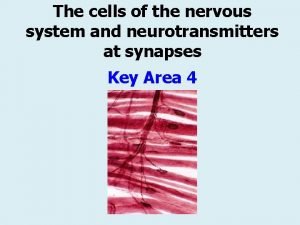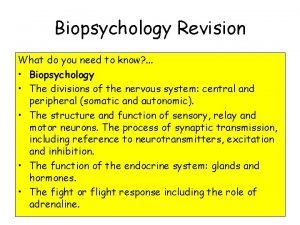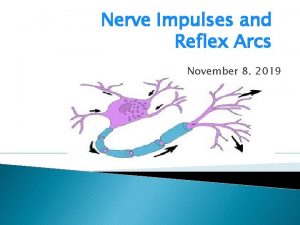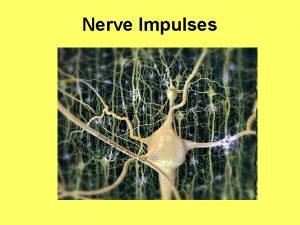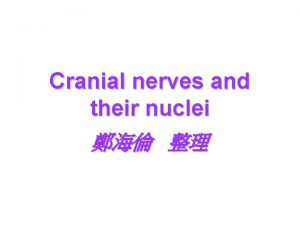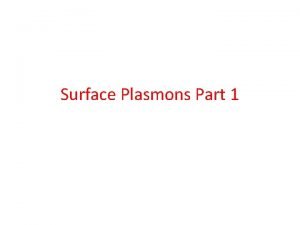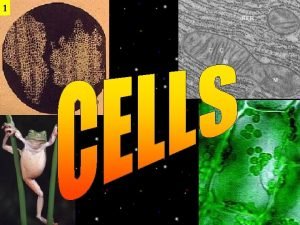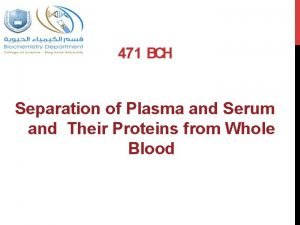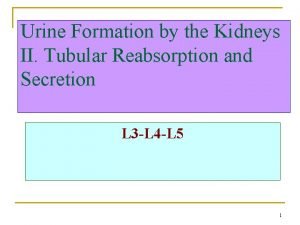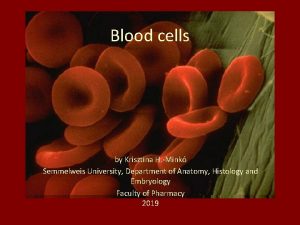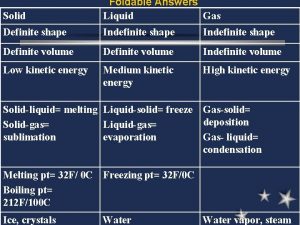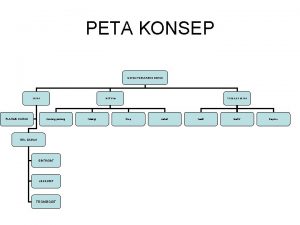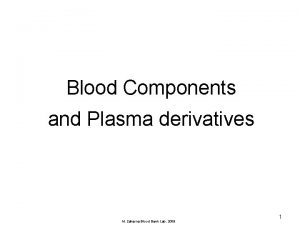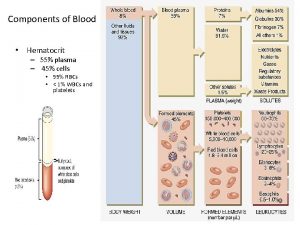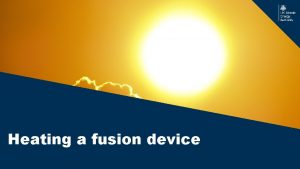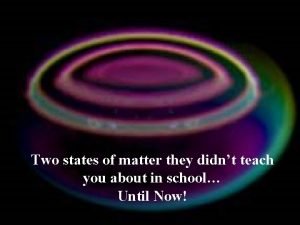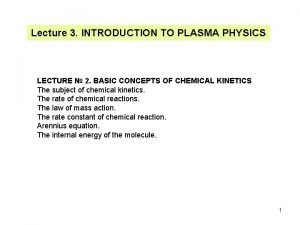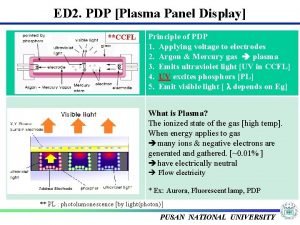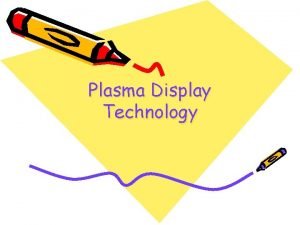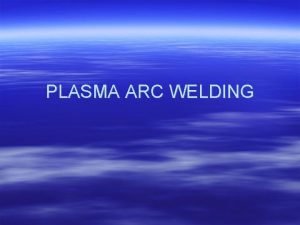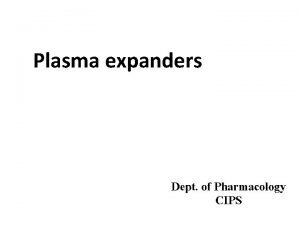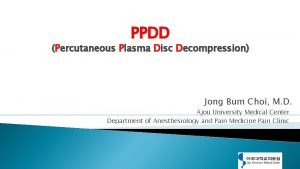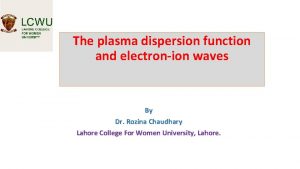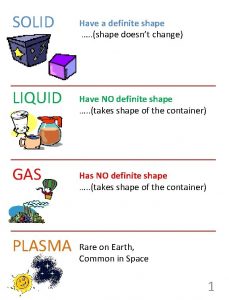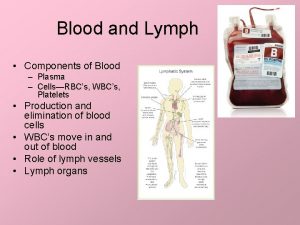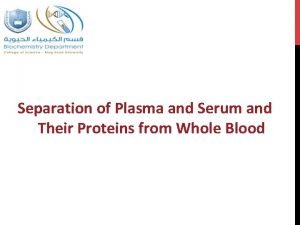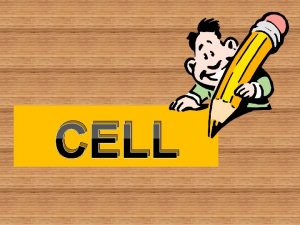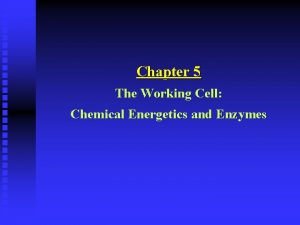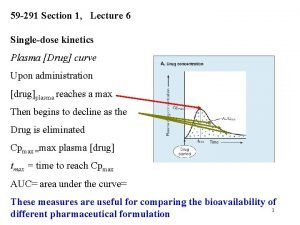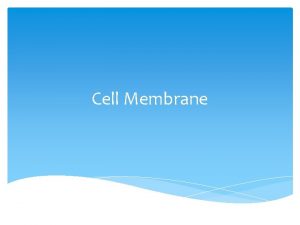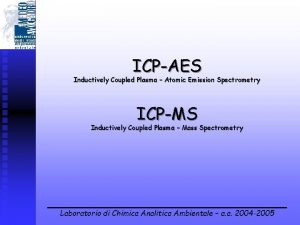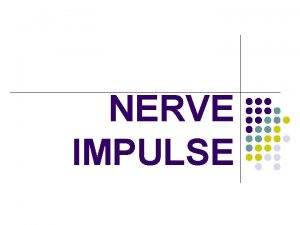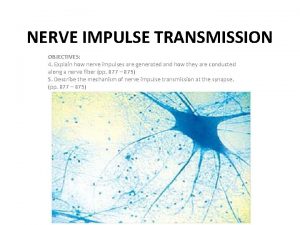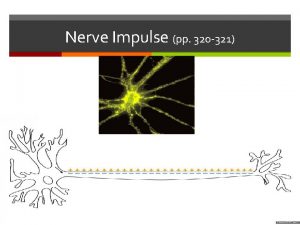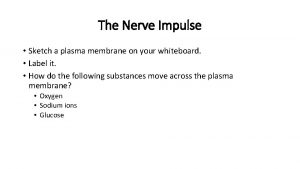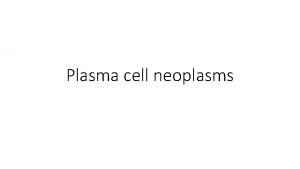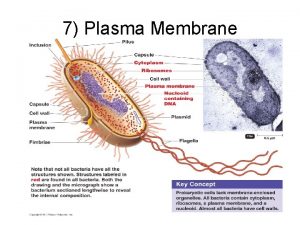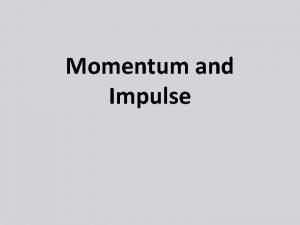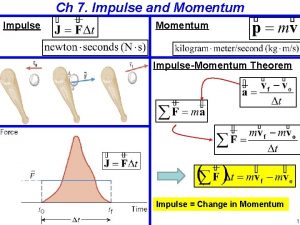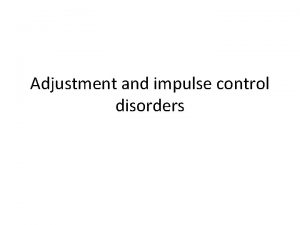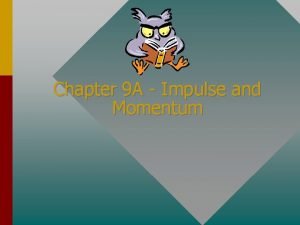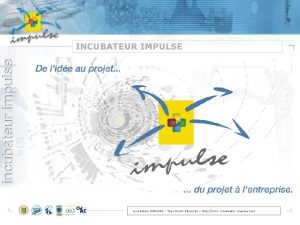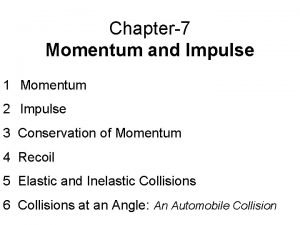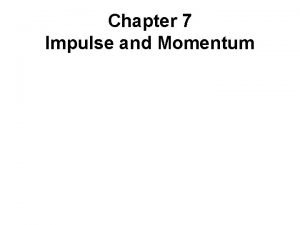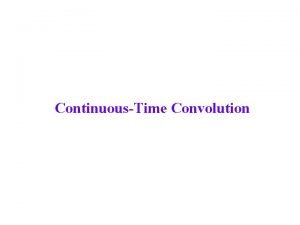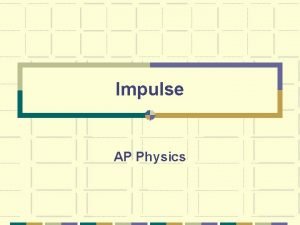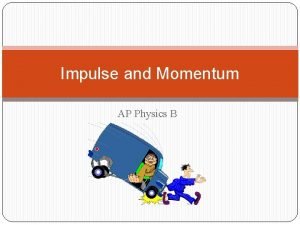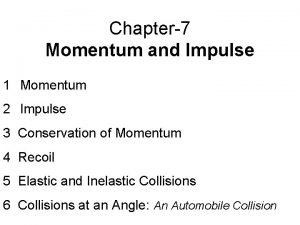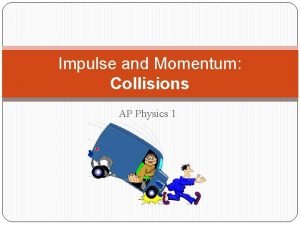The Nerve Impulse The Nerve Impulse The plasma









































- Slides: 41

The Nerve Impulse

The Nerve Impulse • The plasma membrane contains a variety of ion channels. • Some are open – – passive or leakage channels • Some are active or gated allowing certain molecules to change the shape and pass through. (open when neurotransmitter binds)

An electrochemical gradient creates an electrical current when ion channels open and ions diffuse across the plasma membrane.

1. chemical gradients – passive, ions move from areas of high concentration to areas of lower concentration

2. electrical gradients – ions move towards areas of opposite charge

• A neuron is at its resting potential when it is inactive. • The plasma membrane is positive on the outside compared to the inside. • The membrane is said to be polarized axon +++++ ------------+++++ Positive outside Negative inside Positive outside Polarized Membrane

This resting potential is due to: 1. active transport of Na+ ions to the exterior of the cell - sodium pump

2. reciprocal transfer of K+ ions to the interior potassium pump

3. “leaking” of K+ ions to the exterior (membrane more permeable to K+) this creates a deficit of positive charge in interior

The electrochemical change that occurs across the membrane surface of a neuron is dependent upon an unequal distribution of ions between the outside and the inside of the plasma membrane.


• When a stimulus occurs, a rapid inflow of Na+ changes the interior locally negative to positive. • The membrane becomes depolarized

• A halt of the inflow of Na+ and a rapid outflow of K+ return the interior negative repolarization • This “action potential” or nerve impulse sweeps along a nerve fiber.


Absolute Refractory Period • during the time of one impulse traveling down the neuron (depolarization), a second impulse cannot be sent

All or Nothing Phenomenon • Stimulus is strong enough to produce an action potential - threshold stimulus produces an “all the way” action potential • No such thing as a little stimulus producing a weak response.

• When the nervous system perceives a strong stimulus, the nerve impulses are generated often. • Two impulses cannot travel down a neuron. • The absolute refractory period is the time between the completion of one sweep and the beginning of another.

What Factors Can Affect the Nerve Impulse?

• Axons of large diameter carry impulses faster. • Myelinated axons carry impulses faster.

Impulse is able to jump from node to node = faster impulse

• Alcohol, Alcohol sedatives, sedatives and anesthetics block nerve impulses by reducing the membrane’s permeability to Na+.

• Cold or pressure that cuts off circulation will reduce nutrients and oxygen and impair impulses. (cold causes vessels to narrow)

The Synapse

The Synapses are junctions between neurons or nervous and muscle cells (or other effectors). * Most occur between an axon and a dendrite.

• presynaptic neurons are “senders” • postsynaptic neurons are “receivers” – postsynaptic cell either a neuron or an effector cell (muscle or gland cell) Postsynaptic Neuron Presynaptic Neuron

Two Kinds of Synapses 1. electrical synapses allow flow of ions between neurons found in: fetal tissue cardiac muscle smooth muscle allows sequential and rhythmic excitations

2. chemical synapses release and receive chemical neurotransmitters which open and close ion channels

Neurotransmitters • regulate many body activities • ex: sleep, hunger, memory, anger, joy • over 100 have been identified


Neuron Circuits

Circuits • Different patterns of synaptic connections are called circuits 1. divergent – amplify impulse

2. convergent – concentrates impulse

Neural Processing The Reflex Arc

Neural Processing - The Reflex Arc • Reflexes are rapid, automatic responses to stimuli. ex: pull away from pain gag blink cough sneeze

• The reflex arc is a serial processing pattern consisting of:

1. receptor - site of stimulus action Skin Stimulus at distal end of neuron Receptor (a)

2. sensory neuron - transmits to CNS Skin Stimulus at distal end of neuron Sensory neuron Receptor (a)

3. integration center - within CNS connects sensory neuron to motor neuron Skin Spinal cord (in cross section) Stimulus at distal end of neuron Sensory neuron Receptor (a) Integration center Interneuron

4. motor neuron - transmits to effector organ Skin Spinal cord (in cross section) Stimulus at distal end of neuron Sensory neuron Integration center Receptor Motor neuron Interneuron (a)

5. effector - muscle fiber or gland cell that responds to impulse Skin Spinal cord (in cross section) Stimulus at distal end of neuron Sensory neuron Integration center Receptor Motor neuron Interneuron (a) Effector

The reflex arc is a serial processing pattern consisting of: 1. receptor - site of stimulus action 2. sensory neuron - transmits to CNS 3. integration center - within CNS; connects sensory neuron to motor neuron 4. motor neuron - transmits to effector organ 5. effector - muscle fiber or gland cell that responds to impulse
 What is happening in this picture
What is happening in this picture Nerve impulse transmission steps
Nerve impulse transmission steps Cerebrum location
Cerebrum location Nerve impulse steps with pictures
Nerve impulse steps with pictures Nerve impulse transmission
Nerve impulse transmission Biopsychology revision
Biopsychology revision Nerve impulse
Nerve impulse Nerve impulse transmission steps
Nerve impulse transmission steps Trigeminal nerve which cranial nerve
Trigeminal nerve which cranial nerve Plasma oscillations
Plasma oscillations Michondrion
Michondrion Plasma and serum
Plasma and serum Trali symptoms
Trali symptoms Tubular secretion in nephron
Tubular secretion in nephron Difference between plasma and serum
Difference between plasma and serum Is the volume of a plasma definite or indefinite
Is the volume of a plasma definite or indefinite Peta konsep eritrosit
Peta konsep eritrosit Ora serrata.
Ora serrata. Laser wakefield acceleration
Laser wakefield acceleration Freeze-dried plasma
Freeze-dried plasma Blood 55 plasma 45
Blood 55 plasma 45 How hot is plasma
How hot is plasma Arc cutting tools
Arc cutting tools Plasma and bose-einstein condensate
Plasma and bose-einstein condensate Kotliar
Kotliar Saha equation in plasma
Saha equation in plasma Plasma display
Plasma display Plasma display technology
Plasma display technology Needle arc micro plasma welding
Needle arc micro plasma welding Plasma expanders
Plasma expanders Ppdd
Ppdd Plasma dispersion function
Plasma dispersion function Solid liquid gas plasma
Solid liquid gas plasma Plasma components
Plasma components Separation of serum
Separation of serum What is plasma panel display in computer graphics
What is plasma panel display in computer graphics Mengapa mitokondria disebut sebagai the powerhouse of cell
Mengapa mitokondria disebut sebagai the powerhouse of cell Plasma membrane
Plasma membrane Drug plasma
Drug plasma Plasma membrane location and function
Plasma membrane location and function Plasma membrane
Plasma membrane Inductively coupled plasma
Inductively coupled plasma
